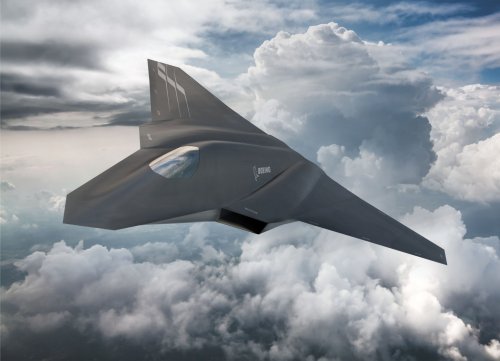OBJECTIVE: Research the use of continuous HPRF to improve detection range and other improvements for air-toair
and air-to-ground scenarios. Also, determine optimum tracking techniques to resolve ambiguities, computational
requirements, and cost trade-offs.
DESCRIPTION: In the first look, first kill environment against lower Radar Cross Section (RCS) targets, fourth and
fifth generation fighters need to maximize their detection range, range resolution, and velocity resolution. Fighters,
surveillance aircraft, and even commercial airliners want to be able to detect and identify targets at lower signal-tonoise
ratios (SNR) while minimizing the radar beam dwelling on a target. Commercial aircraft have the problem of
locating and avoiding small aircraft or micro unmanned aerial vehicles (UAVs). Being able to accurately determine
the range and velocity, and track a target is problematic in many ways and involves non-ideal waveforms. The
probability of detection in coherent radar depends on the signal energy contained in the coherent processing interval
(CPI) and processing gain. The Doppler (velocity) resolution is improved by increasing the duration of the CPI,
which prompts the use of longer coherent train of pulses. The range resolution improves with the bandwidth of the
signal, which prompts the use of narrow pulses or modulated longer pulses. Two problems associated with long
modulated pulses are extended blind range regions due to eclipsed transmission and reduced Doppler tolerance or
resolution of the individual pulses.
The best technique for increasing the energy in a CPI, while improving range and velocity resolution, can be
accomplished by more pulses within a CPI. For a fixed CPI, this implies using a continuous HPRF waveform. HPRF
offers many advantages in addition to improved maximum detection range. For example: better exo-clutter
performance, improved range resolution, Doppler bins are narrower with decreased filter straddling losses, and more
points in FFT for better processing gain. However, the single most significant advantage will be the system's ability
to use one continuous PRF and dwell for long periods of time on a single resolution cell to increase detection
probability for low RCS targets at longer ranges.
However, the HPRF waveform, or mode, can suffer multiple unknown range ambiguities that are attributed to the
delay of returns from distant targets being longer than the pulse repetition interval (PRI). Currently, one common
approach to resolve range ambiguity is the use of several CPIs within a single dwell, where each CPI has a different
PRF (i.e., PRF hopping). Resolving true range and Doppler is then performed noncoherently, using an M out of N
decision statistic. Where, for example, M is 2 or 3 PRFs, while N could be as large as 8 PRFs. Thus, a 2 out of 8
detection decision implies that in the worst case only 2 out of the possible 8 CPIs contribute energy to the detection
process. This is a grossly inefficient use of the transmitter energy which, in turn, reduces the maximum detection
range.
Today processing power and sophisticated tracking techniques could be used to resolve these range ambiguities (i.e.,
eliminating second time around targets) in high PRF systems. The Air Force can take advantage of ambiguous
pulses more likely producing illogical tracks due to the far-out targets moving through resolution cells slower than
near-in targets, in addition to other factors. Tracking filters, Bayesian logic, and/or track-before-detect techniques
could also be used to eliminate these ambiguities.
Teaming/coordination with prime contractors is encouraged to facilitate transition opportunities.
PHASE I: Develop techniques to resolve range ambiguities in a continuous HPRF mode. Complete trade-off study
for various ambiguity reduction techniques such as tracking filters. Evaluate each approach in various air-to-air and
air-to-ground scenarios against various targets. Determine SNR, processing gains, resolution improvements,
computational requirements, and perform trade-off analysis.
PHASE II: Integrate developed techniques into a real radar or a simulated radar system using real data in a
continuous HPRF mode. Determine sampling, data bandwidths, and computational requirements. . Determine
performance parameters. Test and evaluate the most promising algorithms to resolve ambiguities using measured PHASE III DUAL USE APPLICATIONS: Construct a prototype system and validate techniques in production
representative environment. Determine performance parameters through experiments and prototype. Follow-on
activities include any customer-unique requirements, training, and operation documentation.


